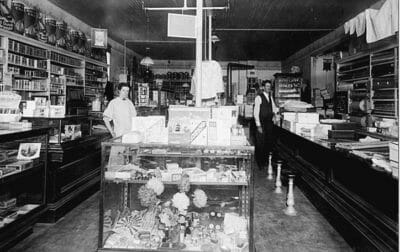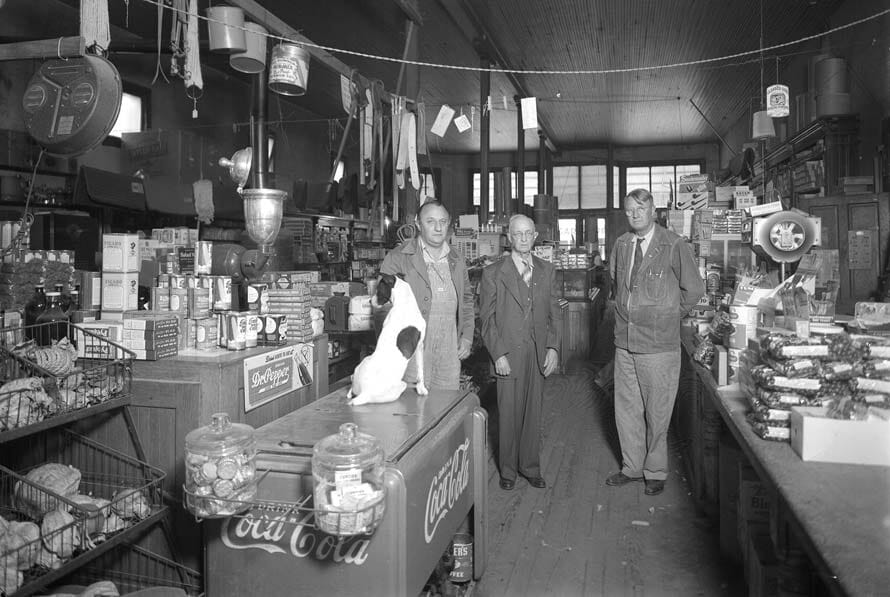It is my personal observation that nothing lasts as long as it did in our grandparents’ day. Clothing, cars, tools, kitchenware—pretty much everything seems to be made for our throwaway culture. It’s hard to know which came first, the chicken or the egg—are people demanding goods that are cheaper and more convenient and the market is obliging, or is the market so flooded with cheap junk that people are having to settle for it?
It might be a little bit of both. Retailers today do not encourage people to want good stuff that lasts—many of us have come to expect things to remain in perfect condition without having to care for them, to simply throw things away and buy a new one when something goes wrong, and to always seek the lowest price.
On the other hand, it is harder to find quality products even when we seek them out. And when we do, they can be so complicated that it’s difficult to maintain them. And even when we do want to have something repaired instead of replacing it, it can be challenging to find a craftsperson or professional to do so.
I get frustrated when replacing big-ticket items and it feels like I am forced to choose between one of two extremes: either goods that are so cheap they are practically disposable, or those which are exorbitantly expensive, require a lot of special care, include lots of frivolous bells and whistles, and probably sport a designer label. I would rather have a simple, solid, well-designed, and built-to-last product.
Sometimes it is worth paying more for good quality. And sometimes it is possible to get the good stuff without paying for all the frills. Here are some of the things I feel are worth spending money on, and ways I access the best possible goods without breaking the bank.
Kitchen goods. I’m a homesteader, foodie and environmentalist. That means I make all my food from scratch—most of it I raised myself and almost all of the rest acquired locally—and spend a ton of time in the kitchen. This is probably the area where I am most apt to spend whatever it takes to own quality products that won’t rust, bend, break, warp or melt. To me, a high-end heavy-duty kitchen pot is worth its weight in, well, stainless-steel-clad copper.
I own one large sauté pan which cost me more money that I would admit to anyone, despite having bought it on sale for half price. But I use it. Every. Single. Day. It’s my go-to for sautés and so much more—jams, frittatas, stews, casseroles, applesauce, roasts, pastas and braises—and I never regret having spent the money on it. If you cook a lot and can possibly justify owning one expensive piece of cookware, do it.
The next best thing—and a very close second—to brand name cookware is commercial equipment. Most of my kitchen goods came from a restaurant supply store. I am fortunate to live in an area where these types of retailers are open to the general public, but there are plenty of similar places online, as well. Restaurant kitchenware is designed for constant heavy use and abuse, and is usually the perfect combination of high quality and plain Jane. It also comes in large sizes that would be priced as specialty items elsewhere, and are great for canning and bulk storage and other homesteading projects. Restaurant equipment is more expensive than big box store goods, but about half the price you’d pay at a gourmet kitchen store.
I have good knives, too. I would rather have a few expensive knives than a lot of cheap ones, but I have put them on my wish lists over the years and have accumulated a nice collection. Mine are guaranteed for life, and I send them back for free factory sharpening every year.
‘Miracle Oil Maker’ Lets You Make Fresh Nut Oils Within Minutes!
An excellent option for buying kitchen goods is to look for them second-hand. Restaurants go out of business a lot, and all that equipment often ends up being resold barely used for pennies on the dollar. Online homesteading groups and resale websites are great places to find deals, too.
Is it possible to turn out great food without high quality kitchenware? Absolutely. My sister’s favorite kitchen pot is 40 years old, warped, missing a handle and was probably cheap to begin with—and she is a fantastic cook. But if you can and want to, spend the money on good kitchen stuff. Steer clear of celebrity endorsements and fancy gadgets, and focus on finding a solid workhorse that will make your kitchen time happier, safer and more efficient.
 Sewing machines and supplies. I am part of a dying breed called “constructionists,” in a world where most people are quilters and crafters. I like to sew mostly clothing—from shirts and pants and dresses to winter accessories—and occasionally making stuffed toys and household décor. I once made and repaired most of the clothing for myself and my family, but rarely do so anymore. The reason is multifold.
Sewing machines and supplies. I am part of a dying breed called “constructionists,” in a world where most people are quilters and crafters. I like to sew mostly clothing—from shirts and pants and dresses to winter accessories—and occasionally making stuffed toys and household décor. I once made and repaired most of the clothing for myself and my family, but rarely do so anymore. The reason is multifold.
First, it’s getting harder to find decent quality fabric for an affordable price, and I hate to put effort into a garment that’s going to shrink and twist and pill like one made offshore.
It’s getting harder to find the notions, too. The selection of elastics, fasteners, zippers and trims doesn’t seem to be the same as it once was. With fewer people making clothes at home, it probably doesn’t pay for stores to stock those specialty items anymore.
Sewing machines have changed, as well. They have more fancy stitches and don’t seem to handle the abuse that my kind of sewing can dish out. The last time I replaced my machine, about a dozen years ago, I ended up with a delicate model that always binds up, hates thick fabric, and refuses to do anything practical. What I wish I had done instead is to look for a light-duty commercial machine. I once worked at a shoe repair shop, where I operated such a machine—it was a mostly manual machine, could sew through multiple layers and turn and stop on a dime, and was solid and dependable—much like the home machine models of yesteryear. If I were to advise anyone buying a machine today for homestead sewing, I’d tell them to look for a good quality light-duty industrial model.
Brand name clothing and shoes. I am not one to buy or wear clothes to impress the Joneses. But I do like clothing that does what it’s supposed to do, by keeping me warm, dry, comfortable, cool, covered or appropriate. I also want it to be washable, keep its shape and texture, and have the buttons and zippers keep working. Usually the best way to get what I need from clothing is to avoid clothing from discount stores and go for higher-end brand names. I try to spend my money at retailers known for quality and stay away from designer products.
I opt for second-hand whenever I can. It makes a lot of sense to buy clothing from thrift stores, consignment shops, Goodwill, and individual resales, as long as you shop judiciously and inspect items carefully for flaws. For about the same money as buying brand new clothing that is cheap and poorly made, you can buy good quality upscale items that still look attractive and have a lot of wear left in them.
When it comes to buying shoes, I have learned my lesson. Decades of cheap stupid shoes have contributed to chronic foot pain and thousands of dollars spent on surgery and other medical treatments. I now spend whatever it takes for a pair of comfortable supportive shoes that won’t hurt my feet, and leave the pointy-toed plastic high heels for those who can afford to abuse their feet.
Major home appliances. Brand names among home appliances are now so convoluted—this brand that was once the best is now owned by that one that was known for being chintzy, for example—and almost all of them are made overseas. Even some of the expensive ones are not worth what you pay. And I have even heard it said that the same exact model of appliance may be manufactured differently for different retailers.
I have spent a lot of money over my lifetime on refrigerators that break down, dishwashers that don’t dispense soap properly, and dryers that have ruined clothing. I have finally figured out that I could have saved a lot by first consulting an appliance repairperson. By asking someone who sees a lot of units and deals with their flaws and knows which ones are the most expensive to keep up, a person buying a new appliance would do well to buy the brands and types recommended by an independent tradesperson. The washer the repairperson would buy for his or her own house? That’s the one I want.
Little things that last longer. I would rather buy better quality items and use them longer, than cheap ones that fail quickly. I think it saves money in the long run, and also conserves planet resources and reduces waste.
A simple example of this philosophy is zip-top bags. I always buy the brand name instead of the less-expensive store brand. The brand names seem to be slightly more heavy duty and the zippers work better, which allows me to wash them out and reuse them multiple times. For me, it makes more sense to use a 10-cent item four times than a 5-cent item once.
This philosophy carries over to things like hand tools and gardening equipment and many other areas of everyday homesteading.
But is more expensive always the best way to go? No. I have a $10 watch that’s 10 years old and still going strong, a hand-held calculator I paid a dollar for brand new and it works great, and a $9 pre-pay phone that does everything I need it to.
These cheap things might not be choices you would not be willing to settle for, and that’s okay. Some of the things I spend a lot of money on would not be worth it to everyone, and that’s okay, too. But the takeaway is this—it is always of value to consider the long-term cost of a purchase, in addition to the number on the price tag. In many instances, you really do get what you pay for. And although our choices today are not the same as the ones our grandparents made, we can still make good decisions when it comes to spending money wisely.
Do you agree or disagree? Share your thoughts in the section below:
 Off The Grid News Better Ideas For Off The Grid Living
Off The Grid News Better Ideas For Off The Grid Living




